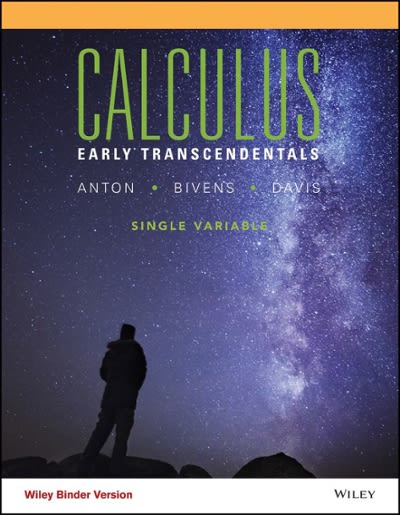Question
The following 14 questions (Q18 to Q31) are based on the following example: A researcher wants to determine whether high school students who attend an
The following 14 questions (Q18 to Q31) are based on the following example: A researcher wants to determine whether high school students who attend an SAT preparation course score significantly different on the SAT than students who do not attend the preparation course. For those who do not attend the course, the population mean is 1050 ( = 1050). The 25 students who attend the preparation course average 1150 on the SAT, with a sample standard deviation of 200. On the basis of these data, can the researcher conclude that the preparation course has a significant difference on SAT scores? St alpha equal to .01.
Q18: The appropriate statistical procedure for this example would be a
A. z-test
B. t-test
Q19: Is this a one-tailed or a two-tailed test?
A. one-tailed
B. two-tailed
Q20: The most appropriate null hypothesis (in words) would be
A. There is no statistical difference in SAT scores when comparing students who took the SAT prep course with the general population of students who did not take the SAT prep course.
B. There is a statistical difference in SAT scores when comparing students who took the SAT prep course with the general population of students who did not take the SAT prep course.
C. The students who took the SAT prep course did not score significantly higher on the SAT when compared to the general population of students who did not take the SAT prep course.
D. The students who took the SAT prep course did score significantly higher on the SAT when compared to the general population of students who did not take the SAT prep course.
Q21: The most appropriate null hypothesis (in symbols) would be
A. SATprep = 1050
B. SATprep = 1150
C. SATprep 1050
D. SATprep 1050
Q22: Set up the criteria for making a decision. That is, find the critical value using an alpha = .01. (Make sure you are sign specific: + ; - ; or ) (Use your tables) Summarize the data into the appropriate test statistic.
Steps:
Q23: What is the numeric value of your standard error?
Q24: What is the z-value or t-value you obtained (your test statistic)?
Q25: Based on your results (and comparing your Q24 and Q22 answers) would you
A. reject the null hypothesis
B. fail to reject the null hypothesis
Q26: The best conclusion for this example would be
A. There is no statistical difference in SAT scores when comparing students who took the SAT prep course with the general population of students who did not take the SAT prep course.
B. There is a statistical difference in SAT scores when comparing students who took the SAT prep course with the general population of students who did not take the SAT prep course.
C. The students who took the SAT prep course did not score significantly higher on the SAT when compared to the general population of students who did not take the SAT prep course.
D. The students who took the SAT prep course did score significantly higher on the SAT when compared to the general population of students who did not take the SAT prep course.
Q27: Based on your evaluation of the null in Q25 and your conclusion is Q26, as a researcher you would be more concerned with a
A. Type I statistical error
B. Type II statistical error Calculate the 95% confidence interval.
Steps:
Q28: The mean you will use for this calculation is
A. 1050
B. 1150
Q29: What is the new critical value you will use for this calculation?
Q30: As you know, two values will be required to complete the following equation: __________bigger than or equal smaller than or equal __________
Q31: Which of the following is a more accurate interpretation of the confidence interval you just computed?
A. We are 95% confident that the scores fall in the interval _____ to _____.
B. We are 95% confident that the average score on the SAT by the students who took the prep course falls in the interval _____ to _____.
C. We are 95% confident that the example above has correct values.
D. We are 95% confident that the difference in SAT scores between the students who took the prep course and the students who did not fall in the interval _____ to _____.
Step by Step Solution
There are 3 Steps involved in it
Step: 1

Get Instant Access to Expert-Tailored Solutions
See step-by-step solutions with expert insights and AI powered tools for academic success
Step: 2

Step: 3

Ace Your Homework with AI
Get the answers you need in no time with our AI-driven, step-by-step assistance
Get Started


